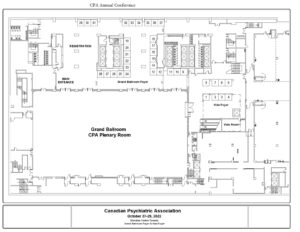W07 – Induction Without Withdrawal: Low-Dose Buprenorphine Inductions
Thursday, Oct. 19
14:30 – 15:30 (1 hr)
Meeting Room: Beluga (3rd floor – B Tower)
Pouya Azar*, MD; Pouya Azar, MD; James Wong, MSc; Nick Mathew, MD, MSc; Martha Ignaszewski, MD
Supported by the Addiction Psychiatry Section
CanMEDS Roles:
- Health Advocate
- Scholar
- Medical Expert
At the end of this session, participants will be able to: 1) Use buprenorphine/naloxone low-dose inductions in inpatient and outpatient settings, chronic pain and prescription opioid-tolerant setting, and complex populations, such as geriatric patients, youth, and adolescents; 2) Use buprenorphine/naloxone to rapidly induce patients onto buprenorphine extended release; and 3) Use transdermal buprenorphine to rapidly induce patients onto buprenorphine/naloxone and buprenorphine extended release.
Buprenorphine is the recommended first-line treatment for opioid use disorder due to its similar efficacy and superior safety profile compared to other opioid agonist treatment medications. However, because of its high binding affinity at μ-opioid receptors (μORs) and high lipophilicity, buprenorphine abruptly displaces other opioids from μORs and has persistent but lower intrinsic efficacy at brain μORs, compared with full agonists, which can lead to precipitated withdrawal. To avoid this outcome, patients are instructed to abstain from opioids and experience at least moderate withdrawal before initiating buprenorphine. This requirement of prior withdrawal and risk of precipitated withdrawal, which can lead to treatment dropout, relapse with unregulated opioids, and subsequent overdose, are major barriers to buprenorphine use among patients and health care staff. Low-dose inductions (also known as micro-dosing and micro-inductions) involve administering small, frequent does of buprenorphine, negating the need for a period of withdrawal and opioid abstinence prior to starting treatment and aims to reduce the risk of precipitated withdrawal. Building on the Bernese method, we have developed novel more rapid methods of low-dose buprenorphine inductions. Using practical real-life cases and patient testimonial videos, we will teach low-dose induction techniques (low-dose induction, rapid low-dose induction, ultra-rapid low-dose induction, and rapid transdermal buprenorphine induction) for complex patient populations (e.g., chronic pain, geriatric, child, adolescent) and clinical scenarios (e.g., mechanically ventilated patients, inpatient and outpatient settings).
References:
- Sukhpreet K, Zivanovic R, Barbic SP, et al. Rapid micro-induction of buprenorphine/naloxone for opioid use disorder in an inpatient setting: a case series. Am J Addict 2019;28(4):262–265.
- Azar P, Wong J, Nickie M, et al. 48-hour induction of transdermal buprenorphine to sublingual buprenorphine/naloxone: the IPPAS method. J Addict Med 2023;17(2):233–236.

